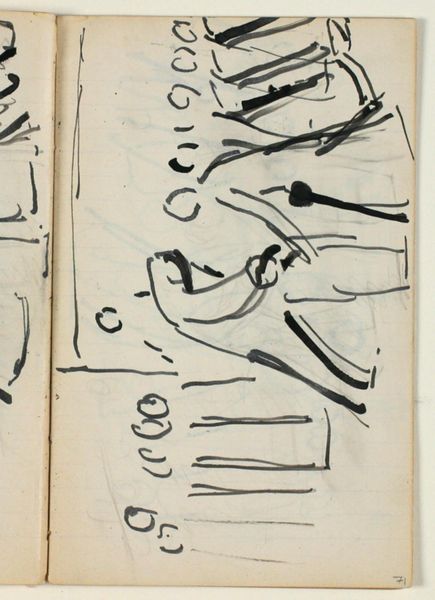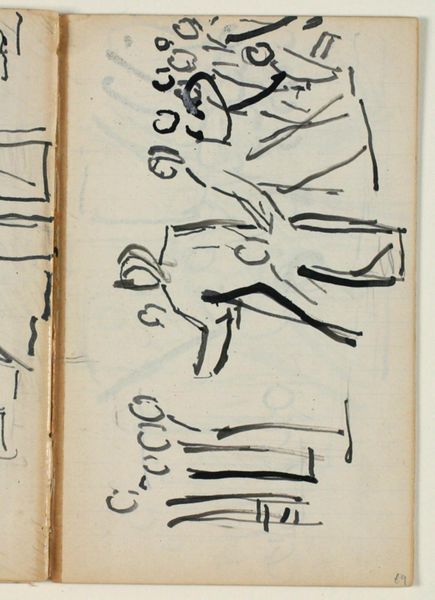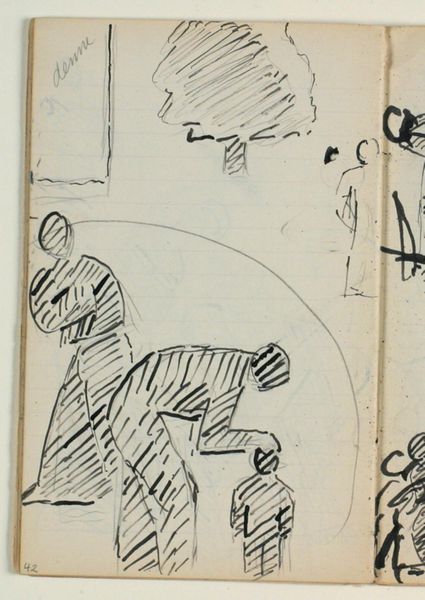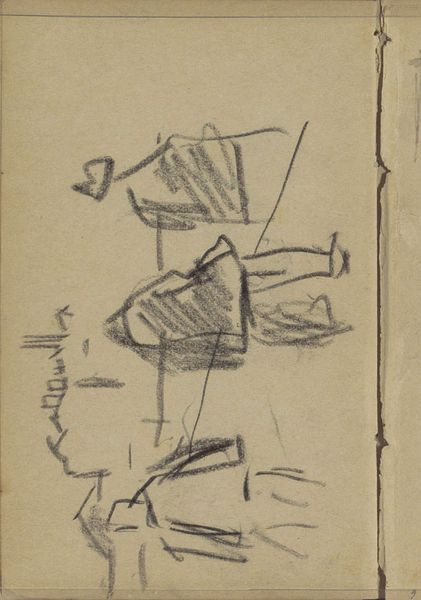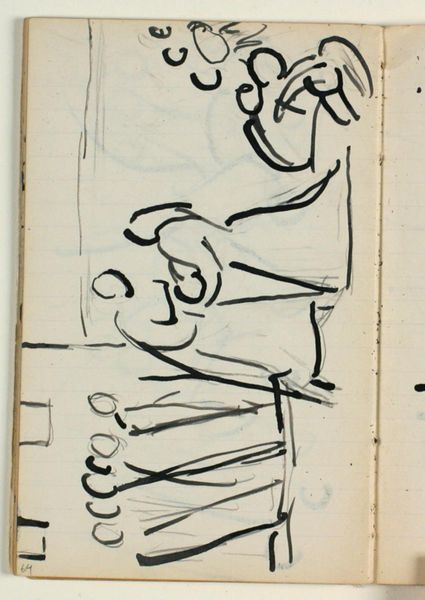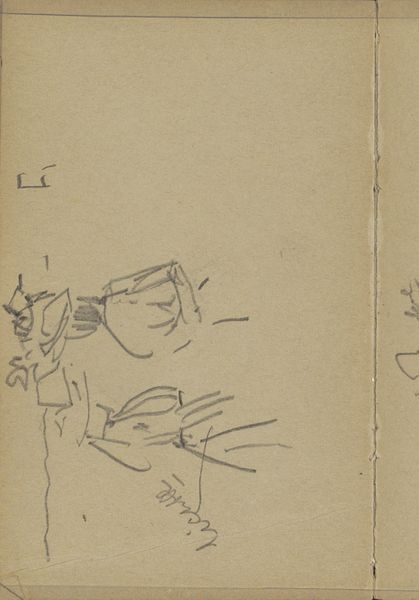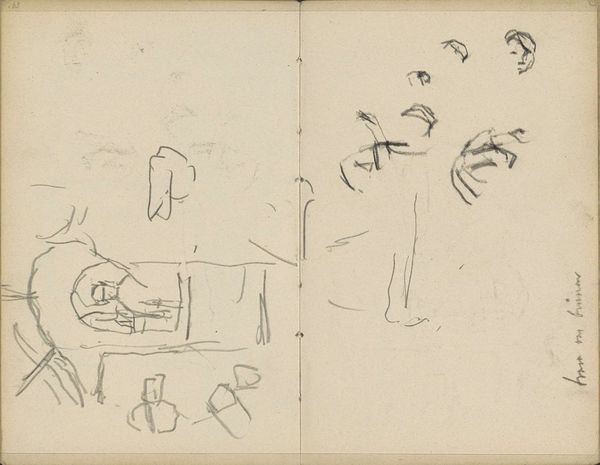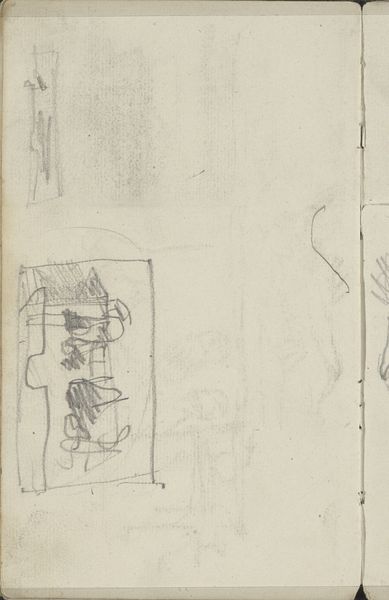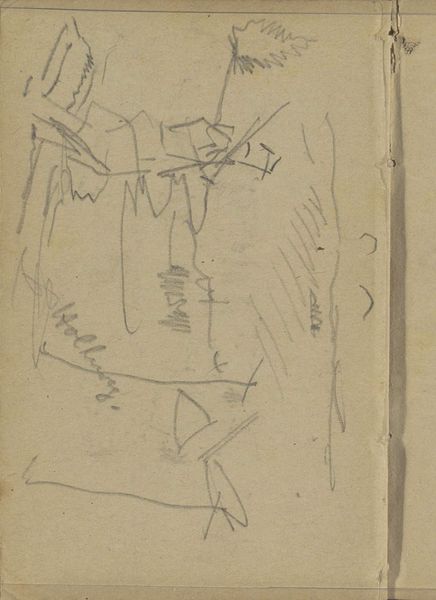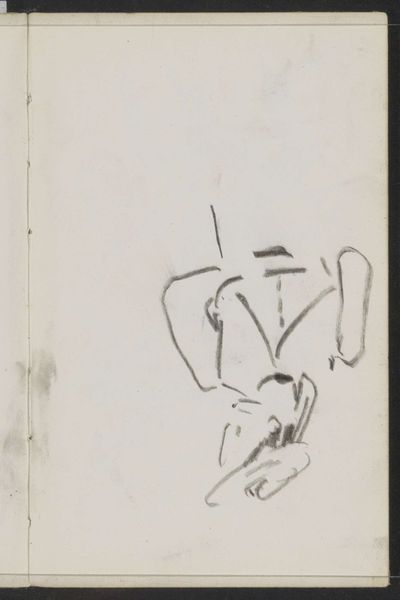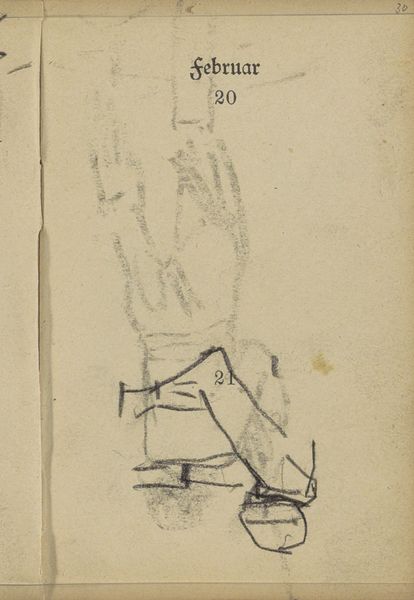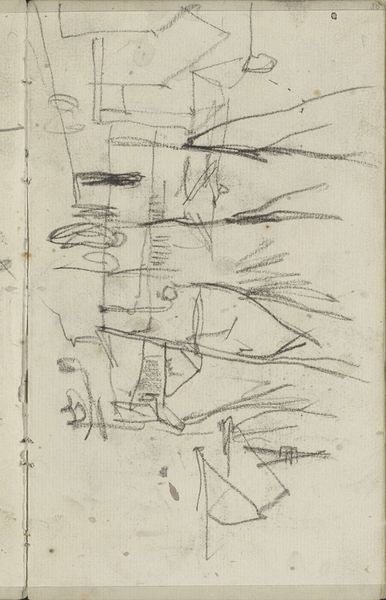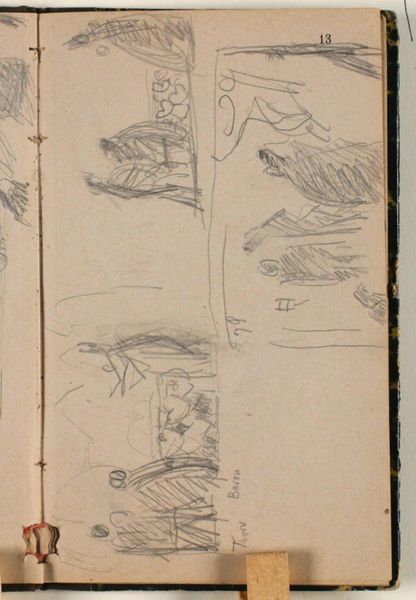
Udkast til "Kristus velsigner de små børn" 1937 - 1938
0:00
0:00
drawing, ink, pencil
#
drawing
#
ink
#
pencil
Dimensions: 178 mm (height) x 111 mm (width) x 5 mm (depth) (monteringsmaal), 178 mm (height) x 111 mm (width) (bladmaal)
Editor: This is a drawing by Niels Larsen Stevns, made with ink and pencil sometime between 1937 and 1938. It’s titled "Udkast til 'Kristus velsigner de sm\u00e5 b\u00f8rn'," which translates to "Sketch for 'Christ Blessing the Little Children'." The rough lines give it such an unfinished, ephemeral quality. What do you see in this piece? Curator: Beyond the explicit biblical scene, I see an exploration of power dynamics. Consider the historical context: the late 1930s were a period of immense social upheaval. Christ’s blessing, often interpreted as a sign of unconditional love, can also be viewed through the lens of institutional power. How might the children, representing innocence and vulnerability, be positioned in relation to this figure of authority? Editor: So, are you saying the drawing is more than just a simple biblical scene? That Stevns is making some kind of statement about authority? Curator: Precisely. Think about the church’s role, historically, in shaping social norms and controlling narratives. This image invites us to question how power operates, even within seemingly benevolent gestures. Notice also the use of simple materials – pencil and ink – to render such a loaded scene. Is Stevns highlighting the bare bones of faith and authority? Editor: That's interesting. I was focusing more on the artistic style itself, but framing it in terms of social power makes me reconsider the intention behind the image. Curator: Exactly. Art doesn’t exist in a vacuum. By understanding the historical and social forces at play, we can excavate deeper meaning. What if we consider the vulnerability of children as a social class? What can it tell us about who deserves safety, protection, and care? Editor: Thinking about it like that really broadens the scope of the image and how we should interpret it. I definitely learned a new way of seeing today. Curator: Me too. Thinking about it intersectionally offers critical tools to unveil hidden connections between art, society, and power.
Comments
No comments
Be the first to comment and join the conversation on the ultimate creative platform.
